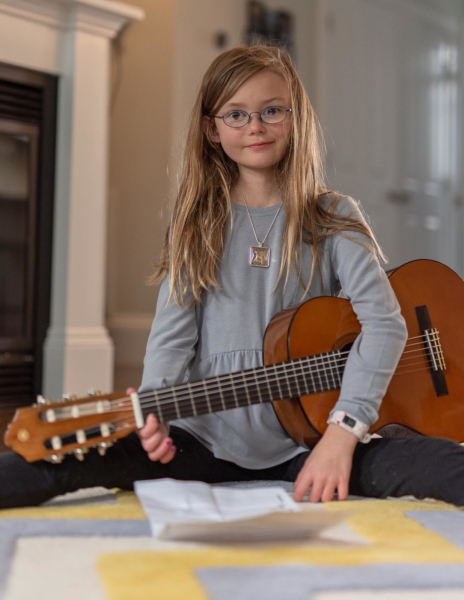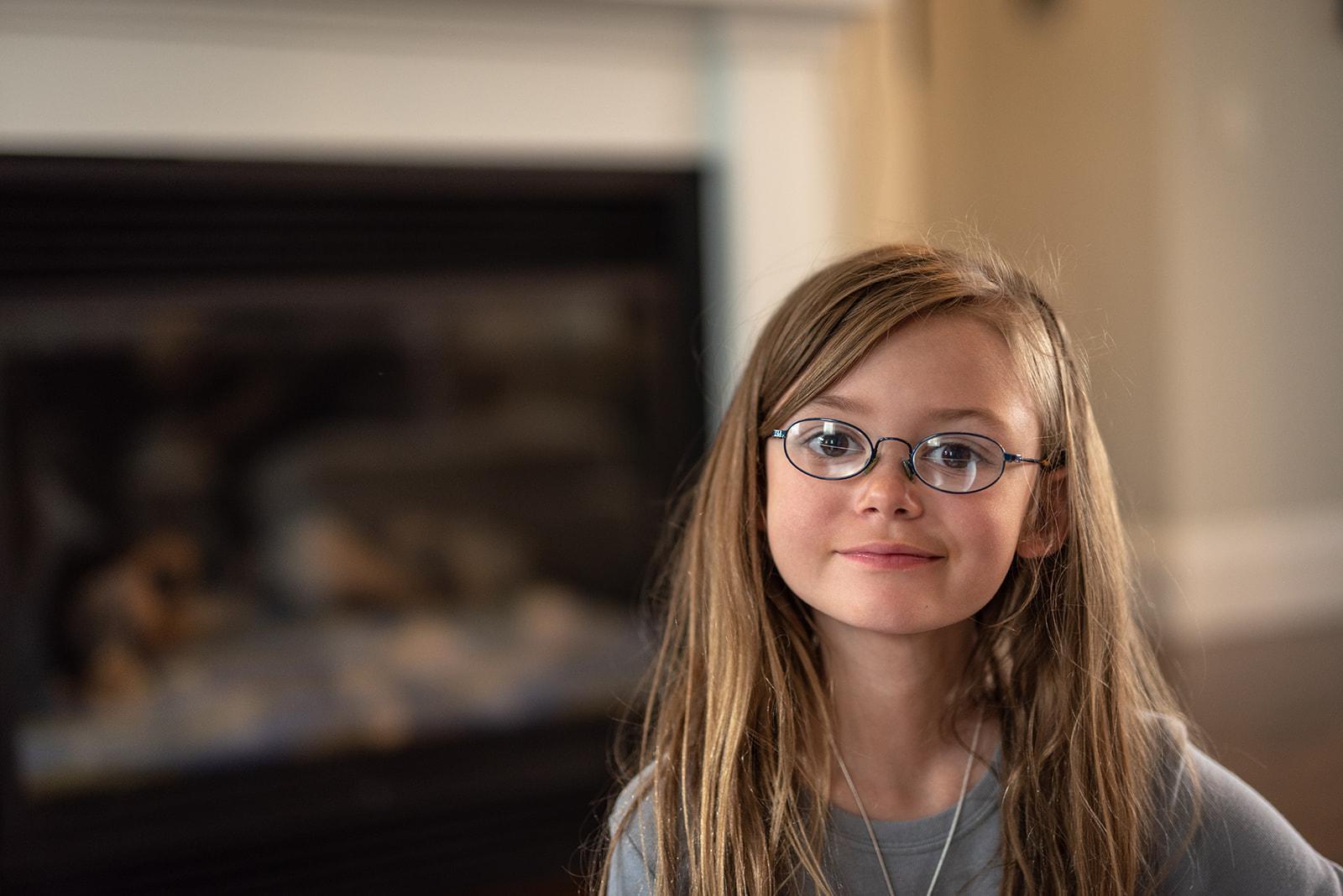
Katelyn’s Story
Patient Voices
Katelyn
FSHD
Boston, Massachusetts | Born January 2011
“My life is 99% happy and 1% frustration with FSHD.”
Katelyn sits at the kitchen counter sipping milk through a bright yellow curly straw. Twirling her long blonde hair with one finger, she talks to her mom, Kristin, about her weekend plans. At the age of eight, she is quite the social butterfly. Katelyn’s after school activities fill her week to the brim. Whether it be ballet-jazz dance class, guitar lessons, yoga, Girl Scouts, or swimming at the YMCA, Katelyn rarely gets tired of socializing. “As soon as she comes home from playing with a friend,” says Kristin, “she tells me, ‘Mom, I need another playdate!”
Katelyn was born with facioscapulohumeral muscular dystrophy (FSHD), a rare, progressive and potentially disabling disease that initially causes weakness in muscles in the face, shoulders, arms and trunk and progresses to weakness in muscles in lower extremities and the pelvic girdle. Shortly after Katelyn’s birth, Kristin intuitively sensed something was wrong. “I was constantly paranoid,” she says, “but thought I was just being a neurotic mother.” Looking back, she now realizes that hints of the disease first revealed themselves when Katelyn was a toddler. “At two years old, she complained of hip pain. She was always slightly slower walking and running than her peers,” Kristin explains. “At five years old, her kindergarten teacher became concerned about her posture, and she could never run like the other kids.” Even so, Katelyn’s father, Holger, tried hard not to acknowledge what was becoming more and more clear. “I remember thinking, ‘There’s no way something’s wrong with my little girl,’” he says.
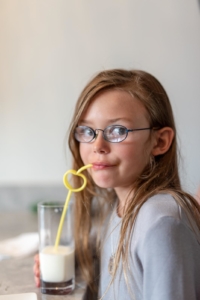 When Katelyn was six years old, her spine started to show signs of lordosis, or curving of the vertebrae in the lower back. Her parents could no longer ignore the obvious. “It looked as if the top of her body was totally disconnected from the bottom half,” Kristin explains. They went to Boston Children’s Hospital for a consultation, thinking it might be scoliosis, but it wasn’t. Next, they took Katelyn to a neurologist and to a muscle clinic. Her creatine kinase (CK) levels were slightly elevated; given that test result, plus the appearance of her body, the team diagnosed Katelyn with FSHD. Little information was given to Kristin and Holger when they received the clinical diagnosis, and there was no roadmap for the progression of the disease. Kristin wanted more information including a scientific diagnosis, so she pressed for further research and genetic testing. “How did I know if I was fighting the right battle? We had to find the exact diagnosis.” Nine months later they learned that Katelyn had both FSHD1 and FSHD2. While the combination is still considered one disease, it is extremely rare.
When Katelyn was six years old, her spine started to show signs of lordosis, or curving of the vertebrae in the lower back. Her parents could no longer ignore the obvious. “It looked as if the top of her body was totally disconnected from the bottom half,” Kristin explains. They went to Boston Children’s Hospital for a consultation, thinking it might be scoliosis, but it wasn’t. Next, they took Katelyn to a neurologist and to a muscle clinic. Her creatine kinase (CK) levels were slightly elevated; given that test result, plus the appearance of her body, the team diagnosed Katelyn with FSHD. Little information was given to Kristin and Holger when they received the clinical diagnosis, and there was no roadmap for the progression of the disease. Kristin wanted more information including a scientific diagnosis, so she pressed for further research and genetic testing. “How did I know if I was fighting the right battle? We had to find the exact diagnosis.” Nine months later they learned that Katelyn had both FSHD1 and FSHD2. While the combination is still considered one disease, it is extremely rare.
Though they were told there was no cure for the disease, Kristin and Holger acted quickly, redefining their routines to support their daughter’s wellbeing. They began physical therapy, exercising most mornings at home for 20 minutes before school, with an additional weekly appointment at a nearby rehabilitation center. Katelyn continues PT today. The therapy is aimed at keeping Katelyn’s muscles active and growing. She enjoys the movement and considers it part of her morning playtime. “I just make sure to keep her active, walking up stairs instead of elevators, and using all of her muscles,” says Holger. “We have to modify activities she loves in order for her to keep doing the things she loves for as long as she can.” His favorite activity with Katelyn is swimming at the YMCA. They go at least once a week.
“I just make sure to keep her active, walking up stairs instead of elevators, and using all of her muscles,” says Holger, Katelyn’s father. “We have to modify activities she loves in order for her to keep doing the things she loves for as long as she can.”
Out in the world, Katelyn approaches life with confidence. She is frank, poised, and self-reliant, largely unfazed by other peoples’ opinions. At school she is surrounded by a loving and accepting community. However, children are curious about her appearance. “They say to me, ‘What’s wrong with your back? Did you break it?’” Katelyn explains what she knows about FSHD. “I tell them I have a disease in my muscles and they usually get real quiet. Or they say, ‘Sorry to hear that. Want to play?’” Despite the difference in her appearance, Katelyn is rarely shy. She performs regularly in talent shows and in school theater. “I don’t have stage fright,” she states proudly.
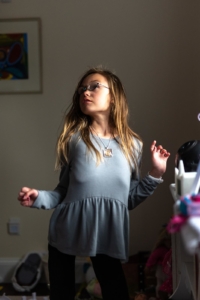 Katelyn’s positivity is matched by her mother’s motivation to help find a therapy for FSHD. When Kristin and Holger first received the diagnosis, Kristin lost sleep staying up at night researching and reaching out to everyone she could find that was affiliated with FSHD in some way. Kristin eventually met June, chief strategic programs officer at the FSHD Society (then the FSH Society), and at their first meeting over coffee she learned more about the disease and what to expect. Filled with gratitude, Kristin said to June, “You’ve been so helpful to me, now how can I help you?” To which June replied that she was looking for someone to spearhead the FSHD Society’s New England chapter. Kristin responded excitedly. “You mean I get to talk to all the scientists and all the pharmaceutical affiliates? I’m in!”
Katelyn’s positivity is matched by her mother’s motivation to help find a therapy for FSHD. When Kristin and Holger first received the diagnosis, Kristin lost sleep staying up at night researching and reaching out to everyone she could find that was affiliated with FSHD in some way. Kristin eventually met June, chief strategic programs officer at the FSHD Society (then the FSH Society), and at their first meeting over coffee she learned more about the disease and what to expect. Filled with gratitude, Kristin said to June, “You’ve been so helpful to me, now how can I help you?” To which June replied that she was looking for someone to spearhead the FSHD Society’s New England chapter. Kristin responded excitedly. “You mean I get to talk to all the scientists and all the pharmaceutical affiliates? I’m in!”
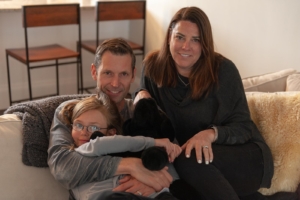 Kristin stepped into her new role as liaison between the FSHD Society and the FSHD community. It’s a full-time job on top of her regular full-time job, and she dedicates most Sundays to her work with FSHD. As part of her duties, Kristin provides firsthand knowledge and support to patients and caregivers, helping people get involved and keeping them “up to speed” with advancements, clinical trials, and other opportunities within the FSHD community.
Kristin stepped into her new role as liaison between the FSHD Society and the FSHD community. It’s a full-time job on top of her regular full-time job, and she dedicates most Sundays to her work with FSHD. As part of her duties, Kristin provides firsthand knowledge and support to patients and caregivers, helping people get involved and keeping them “up to speed” with advancements, clinical trials, and other opportunities within the FSHD community.
For Kristin, there is an urgency to this work. “To everyone with FSHD, I say, ‘Do you see the news? Do you know that you need to be scientifically diagnosed?’” She avidly encourages people to get genetically tested and to stay informed, so that they can make decisions about treatment options and trials. “There are often more options than people are aware of,” she says. “We are helping to spread that information and make sure it reaches them.”
Katelyn’s positivity is matched by her mother’s motivation to help find a therapy for FSHD.
“We’re looking for a therapy any way we can get one,” she says. “It really comes down to the patients and the caregivers banding together and making sure the access and knowledge is out there so that the pharmaceutical companies don’t lose interest if they feel that the community is not engaged.”
The job is exciting, but also stressful. In contrast, Katelyn’s relatively stable condition helps keep things calm at home. “Katelyn is in such great shape and doing so well right now,” says Kristin. “That’s what I hang on to.” Katelyn’s disease hasn’t visibly progressed in the last year and a half. The family’s life is full of playdates and field trips, music, and trips to the family cabin in Vermont. They recently celebrated Katelyn’s birthday with a sleepover party at the Boston Museum of Science where Kristin, Holger, and 11 other girls spent the night.
“My life is 99% happy and 1% frustration,” Katelyn tells her mom. “And that frustration is FSHD.” Kristin looks at her daughter and asks tenderly, “Is that a weekly frustration, a daily frustration, or…” to which Katelyn replies nonchalantly, “Nah, it’s like once a year.” Katelyn returns to her guitar, sits on the rug, strums and sings as loudly as she can. She is happy to be here, and so too are her parents. To the FSHD community, Kristin says, “It’s solvable. Be involved. Let’s band together. We’re the only ones that can make it happen.”
